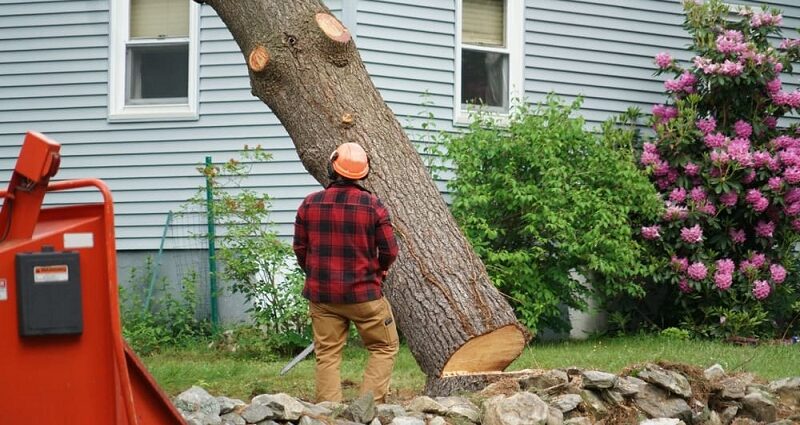Trees are vital components of our environment, providing us with clean air, shade, and aesthetic beauty. However, there are occasions when trees need to be removed due to safety concerns, disease, or development purposes. Tree removal can be a hazardous task, requiring careful planning and execution to ensure the safety of people and property. In this article, we will discuss safe tree removal techniques that arborists and homeowners can employ to efficiently and securely remove trees.
1. Assessment and Planning
Before initiating the tree removal process, a thorough assessment of the tree and its surroundings is essential. Determine the tree’s height, diameter, lean, and the presence of any obstacles such as buildings, power lines, or other trees. Assess the health of the tree to anticipate any potential hazards during removal.
2. Safety Gear and Equipment
Proper safety gear is crucial for anyone involved in tree removal. This includes helmets, eye protection, hearing protection, gloves, and sturdy footwear. Additionally, the appropriate tools and equipment must be used, such as chainsaws, ropes, harnesses, and rigging equipment.
3. Establishing a Drop Zone
Identify a clear drop zone where the tree can safely fall without causing damage to property or endangering individuals. Clear the area of any obstacles and establish boundaries to keep bystanders at a safe distance. Communicate the drop zone and safety measures to all personnel involved in the removal process.
4. Pruning and Limbing
Before felling the tree, it’s essential to remove any branches or limbs that could interfere with the removal process. Start by pruning smaller branches, working your way up to larger limbs. Use proper cutting techniques to prevent accidents and ensure the safety of workers on the ground.
5. Directional Felling
Directional felling involves carefully choosing the direction in which the tree will fall. Factors such as the tree’s lean, wind direction, and surrounding obstacles must be considered. Make precise cuts on the tree’s trunk to control its fall and guide it towards the predetermined drop zone.
6. Controlled Dismantling
In situations where space constraints or obstacles prevent the tree from being felled in one piece, controlled dismantling may be necessary. This technique involves systematically removing sections of the tree from top to bottom using ropes, pulleys, and rigging equipment. Each section is carefully lowered to the ground to prevent damage to property or injury to personnel.
7. Using Support Systems
For particularly large or hazardous trees, support systems such as cranes or aerial lifts may be employed to assist in the removal process. These systems provide additional stability and control, allowing arborists to safely access and dismantle trees in challenging environments.
8. Stump Removal
Once the tree has been felled, the stump must be removed to prevent regrowth and eliminate tripping hazards. Stump removal techniques include grinding, excavation, or chemical treatment, depending on the size and location of the stump.
9. Cleanup and Disposal
After the tree has been removed, the site must be thoroughly cleaned and debris disposed of properly. Wood chips and logs can be recycled or repurposed, while branches and foliage can be composted. Ensure that all equipment is properly stowed and the work area is left clean and safe.
10. Professional Assistance
While some homeowners may attempt to remove trees themselves, it’s often safer and more efficient to enlist the services of professional arborists. Experienced tree care professionals have the knowledge, skills, and equipment necessary to safely remove trees of all sizes and complexities while minimizing risks to people and property.
In conclusion, safe tree removal requires careful planning, proper equipment, and adherence to established techniques and safety protocols. By following these guidelines, arborists and homeowners can effectively remove trees while mitigating the risk of accidents and injuries. Remember to prioritize safety at all times and consider seeking professional assistance for complex or hazardous tree removal projects.

